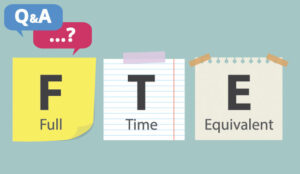Donna Lightfoot at Playvox looks at how one person can impact your workforce management plan
As workforce management professionals, we are faced with the daunting task of figuring out the ideal forecast, matching that forecast with a schedule and then making sure that our “master plan” works in the real world – meaning all the people that we are counting on for their shifts work their shifts as planned.
Unfortunately, it doesn’t always play out that way. And we have all seen the impact of just one person doing something NOT in the plan and the downstream effects.
For example, one person may log in late for their opening shift. Another person may not adhere to scheduled breaks or lunches.
One person may leave early from their closing shift. All these singular actions can negatively impact service level metrics and the customer experience.
A workforce management professional can have all the “rights” in place – the right people at the right place at the right time with the right forecast and the right schedule – but we cannot account for all aspects of human behavior.
When I began my career as a call centre agent at a healthcare company, I shared the mentality of many coworkers. I often thought to myself:
- What difference does it make if I am a couple of minutes late logging in?
- Why should it matter if I leave a few minutes early?
- Why can’t I take a 45 minute lunch break instead of 30 minutes?
- We have 200 agents working on calls. It won’t make a difference if I take that extra 5 minutes on break.
Does this sound familiar to you?
The Impact of One Person – Compounded
As workforce management professionals, we know how one person can make a difference in providing timely service to our customers and hitting SLAs – or missing them completely.
The book “The Power of One” goes into further detail regarding this concept. Here are a few tips to help you demonstrate this powerful concept to your agents.
How to Ensure Contact Centre Agents Understand Their Impact
There are a couple of different ways to help customer service agents understand the ways each of them can positively or negatively impact service levels. One way is to model out various scenarios and present them back to the team.
Below is an example that displays how many team members you have and the impact of having one staff member missing in speed to answer, including phone calls, chats or other interactions.
| Number of Staff | Average Speed of Answer |
|---|---|
| 54 | 6 secs |
| 53 | 8 secs |
| 52 | 12 secs |
| 51 | 19 secs |
| 50 | 30 secs |
| 49 | 50 secs |
| 48 | 91 secs |
| 47 | 236 secs |
The larger number of available staff, the smaller the impact of one or two people not being available as scheduled. However, those one or two people quickly add up, especially when there is a small number of staff in place and the impact absolutely can be detrimental to the customer experience.
When several agents are not following their schedules, the impact is more severe and can increase costs in overtime, customer handle time, efficiency, and even customer retention, regardless of the size of the staff.
As you look at the chart above, you may think the difference of a few seconds may not be that big. However, I would challenge you to stop reading and count out 6 seconds as compared to 12 seconds. Now think about when you are sitting on hold or waiting for someone to chat you back.
A few seconds can feel like an eternity – particularly when no one contacts a customer care center because they want to do it; they have to reach out to your company as avenues such as self-service have likely failed.
Agents may not understand how an extra unscheduled break or being a few minutes late in the morning or after a break can negatively impact the business and their peers. In order to demonstrate the impact, I’ve pulled in a few “Power of One” exercises from this article. You can use these in a huddle or team meeting, and they don’t take a lot of time.
Power of One Customer Care and Contact Centre Exercises
Tennis Ball Activity
Pull together a group of associates and ask them to line up in two groups facing one another. One side represents customers and the others serve as customer support agents. Give each of the “customers” a tennis ball, which represents a phone call or live chat.
Then ask the customers to begin throwing the ball back and forth to the “agent” across from them. This is very easy and smooth as long as there is a one-to-one ratio of customers to agents.
Now send an agent on break and keep all the customers in place. Then send another support person on an unscheduled break and leave all the customers in place. Keep throwing the balls back and forth to the remaining agents.
The participants can easily see the impact of losing one agent, and then they really feel the impact of losing additional agents.
This is also an excellent illustration to employ when talking about average handle time, schedule adherence, queue times, average speed of answer, and service level.
Balloon Game
This is a fun game that requires only balloons and a little space. Inflate a bunch of balloons. Have your agents gather in a room (preferably with space to move around and a high ceiling), and get a few people to start tossing the balloons in the air.
The object of the game is to keep all the balloons in the air and not let any touch the floor. The agents need to tap all the balloons up before they fall to the floor.
Start taking agents away to represent agents out of adherence. Keep adding balloons and let the team experience how difficult it is to keep all the balloons in the air with fewer and fewer people.
Perfection Game Activity
Perfection is a battery-operated game where you set a timer and try to place a variety of differently shaped pieces into their respective slots before the timer runs out.
To illustrate the power of one to your contact centre agents, have three people placing the shapes simultaneously. They will finish at a leisurely pace before the timer expires.
Then remove an agent from the mix because they were signed off unexpectedly and not adhering to their schedule. Reset the timer for the exact amount of time it took for three people to finish the job.
Without fail, the two remaining people will work frantically but will not be able to complete the task before the timer expires and the pieces pop up.
Now share that the shapes represent calls, and the time it takes to place these shapes into their slots represents handle time.
Also explain that when you had the right number of people in place to handle the task, everyone was able to work at a comfortable pace and get the job done. With the unexpected absence of just one agent, the remaining agents were forced to work frantically and still couldn’t get the job done.
There are many ways to demonstrate this principle. Try these tips or get creative and try your own. The end result is to show each agent they are a valued member of the company, team, and the customer experience. Their actions make a big difference every day.
How to Ensure the Concept Is Understood and Embraced
Regardless of the activity you select for your team, be sure to explore the answers to these questions afterward. They help to reinforce how each person’s actions impacts his or her peers, the company, and the customer experience.
- What was the effect on service?
- What was the impact on agents?
- What difference did one person make in this exercise?
There are many different options on how to demonstrate this concept, so be creative and have fun. After all, this is a team-building activity as well as a demonstration of how one person can have a far reaching impact on others.
Author: Guest Author
Published On: 12th Sep 2022
Read more about - Guest Blogs, Playvox















